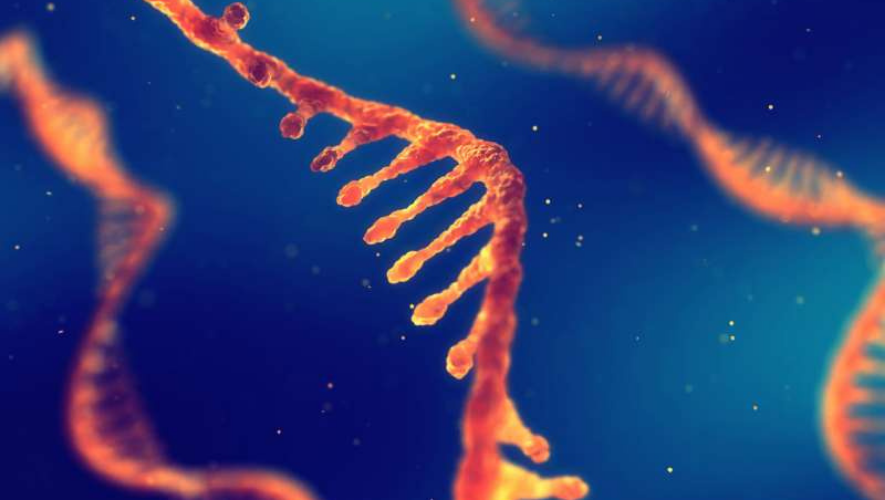Luigi Donato, Concetta Scimone, Simona Alibrandi, Domenico Mordà, Alessandra Costa, Fabiana Nicita, Rosalia D’angelo, Antonina Sidoti
Summary
The growing knowledge on non-coding RNAs (ncRNAs) suggests that a significant number of transcriptional and posttranscriptional regulative mechanisms in eukaryotes could represent the key to improve our knowledge on many diseases etiopathogenesis, like inherited retinal diseases (IRDs). Among ncRNAs, small nucleolar RNAs (snoRNAs) is still an unexplored world. We investigated the posttranscriptional RNA editing landscape of human retinal pigment epithelium cells (RPE) exposed to the oxidant agent N-retinylidene-N-retinyl ethanolamine (A2E) for 3 h and 6 h, focusing on snoRNA host and target genes. Using a transcriptomic approach, refined with a specific multialgorithm pipeline, 9 snoRNA editing sites within related host genes were identified among all samples. Such genes resulted involved in several biochemical pathways linked to retinal neurotransmission. SnoRNA epitranscriptome analysis of oxidative stress induced RPE cells suggested that such ncRNAs could play a relevant role in IRD etiopathogenesis, regulating pathways directly or indirectly related to the considered disease.
References
1. Christofi, T. and A. Zaravinos. (2019). RNA editing in the forefront of epitranscriptomics and human health. J Transl Med, 17(1), 319.
2. Ramaswami, G. and J.B. Li. (2016). Identification of human RNA editing sites: A historical perspective. Methods, 107, 42-7.
3. Daniel, C., J. Lagergren, and M. Ohman. (2015). RNA editing of non-coding RNA and its role in gene regulation. Biochimie, 117, 22-7.
4. Gagnidze, K., V. Rayon-Estrada, S. Harroch, K. Bulloch, and F.N. Papavasiliou. (2018). A New Chapter in Genetic Medicine: RNA Editing and its Role in Disease Pathogenesis. Trends Mol Med, 24(3), 294-303.
5. Costa Cruz, P.H. and Y. Kawahara. (2021). RNA Editing in Neurological and Neurodegenerative Disorders. Methods Mol Biol, 2181, 309-330.
6. Scimone, C., P. Bramanti, C. Alafaci, F. Granata, F. Piva, C. Rinaldi, L. Donato, F. Greco, A. Sidoti, and R. D’Angelo. (2017). Update on Novel CCM Gene Mutations in Patients with Cerebral Cavernous Malformations. J Mol Neurosci, 61(2), 189-198.
7. Santosh, B., A. Varshney, and P.K. Yadava. (2015). Non-coding RNAs: biological functions and applications. Cell Biochem Funct, 33(1), 14-22.
8. Arai, T., S. Ito, and T. Suzuki. (2013). [Biogenesis and function of posttranscriptional modification of ribosomal RNA]. Seikagaku, 85(10), 896-908.
9. McMahon, M., A. Contreras, and D. Ruggero. (2015). Small RNAs with big implications: new insights into H/ACA snoRNA function and their role in human disease. Wiley Interdiscip Rev RNA, 6(2), 173-89.
10. Scott, M.S., M. Ono, K. Yamada, A. Endo, G.J. Barton, and A.I. Lamond. (2012). Human box C/D snoRNA processing conservation across multiple cell types. Nucleic Acids Res, 40(8), 3676-88.
11. Watkins, N.J. and M.T. Bohnsack. (2012). The box C/D and H/ACA snoRNPs: key players in the modification, processing and the dynamic folding of ribosomal RNA. Wiley Interdiscip Rev RNA, 3(3), 397-414.
12. Dupuis-Sandoval, F., M. Poirier, and M.S. Scott. (2015). The emerging landscape of small nucleolar RNAs in cell biology. Wiley Interdiscip Rev RNA, 6(4), 381-97.
13. Stepanov, G.A., J.A. Filippova, A.B. Komissarov, E.V. Kuligina, V.A. Richter, and D.V. Semenov. (2015). Regulatory role of small nucleolar RNAs in human diseases. Biomed Res Int, 2015, 206849.
14. Liu, C.H., Z. Wang, Y. Sun, J.P. SanGiovanni, and J. Chen. (2016). Retinal expression of small non-coding RNAs in a murine model of proliferative retinopathy. Sci Rep, 6, 33947.
15. Diroma, M.A., L. Ciaccia, G. Pesole, and E. Picardi. (2021). Bioinformatics Resources for RNA Editing. Methods Mol Biol, 2181, 177-191.
16. Tran, S.S., Q. Zhou, and X. Xiao. (2020). Statistical inference of differential RNA-editing sites from RNA-sequencing data by hierarchical modeling. Bioinformatics, 36(9), 2796-2804.
17. Donato, L., C. Scimone, S. Alibrandi, C. Rinaldi, A. Sidoti, and R. D’Angelo. (2020). Transcriptome Analyses of lncRNAs in A2E-Stressed Retinal Epithelial Cells Unveil Advanced Links between Metabolic Impairments Related to Oxidative Stress and Retinitis Pigmentosa. Antioxidants (Basel), 9(4).
18. Blasiak, J. (2020). Senescence in the pathogenesis of age-related macular degeneration. Cell Mol Life Sci, 77(5), 789-805.
19. Scimone, C., L. Donato, S. Alibrandi, M. Vadala, G. Giglia, A. Sidoti, and R. D’Angelo. (2021). N-retinylidene-N-retinylethanolamine adduct induces expression of chronic inflammation cytokines in retinal pigment epithelium cells. Exp Eye Res, 209, 108641.
20. Rinaldi, C., L. Donato, S. Alibrandi, C. Scimone, R. D’Angelo, and A. Sidoti. (2021). Oxidative Stress and the Neurovascular Unit. Life (Basel), 11(8).
21. Donato, L., R. D’Angelo, S. Alibrandi, C. Rinaldi, A. Sidoti, and C. Scimone. (2020). Effects of A2E-Induced Oxidative Stress on Retinal Epithelial Cells: New Insights on Differential Gene Response and Retinal Dystrophies. Antioxidants (Basel), 9(4).
22. Sparrow, J.R., J. Zhou, S. Ben-Shabat, H. Vollmer, Y. Itagaki, and K. Nakanishi. (2002). Involvement of oxidative mechanisms in blue-light-induced damage to A2E-laden RPE. Invest Ophthalmol Vis Sci, 43(4), 1222-7.
23. Pham, T.N.M., C.Y. Shin, S.H. Park, T.H. Lee, H.Y. Ryu, S.B. Kim, K. Auh, and K.W. Jeong. (2021). Solanum melongena L. Extract Protects Retinal Pigment Epithelial Cells from Blue Light-Induced Phototoxicity in In Vitro and In Vivo Models. Nutrients, 13(2).
24. Jin, H.L. and K.W. Jeong. (2022). Transcriptome Analysis of Long-Term Exposure to Blue Light in Retinal Pigment Epithelial Cells. Biomol Ther (Seoul), 30(3), 291-297.
25. Okonechnikov, K., A. Conesa, and F. Garcia-Alcalde. (2016). Qualimap 2: advanced multi-sample quality control for high-throughput sequencing data. Bioinformatics, 32(2), 292-4.
26. Ramaswami, G. and J.B. Li. (2014). RADAR: a rigorously annotated database of A-to-I RNA editing. Nucleic Acids Res, 42(Database issue), D109-13.
27. Lo Giudice, C., M.A. Tangaro, G. Pesole, and E. Picardi. (2020). Investigating RNA editing in deep transcriptome datasets with REDItools and REDIportal. Nat Protoc, 15(3), 1098-1131.
28. IBM. IBM SPSS Statistics for Windows, Version 26.0.
29. Bouchard-Bourelle, P., C. Desjardins-Henri, D. Mathurin-St-Pierre, G. Deschamps-Francoeur, E. Fafard-Couture, J.M. Garant, S.A. Elela, and M.S. Scott. (2020). snoDB: an interactive database of human snoRNA sequences, abundance and interactions. Nucleic Acids Res, 48(D1), D220-D225.
30. Bindea, G., B. Mlecnik, H. Hackl, P. Charoentong, M. Tosolini, A. Kirilovsky, W.H. Fridman, F. Pages, Z. Trajanoski, and J. Galon. (2009). ClueGO: a Cytoscape plug-in to decipher functionally grouped gene ontology and pathway annotation networks. Bioinformatics, 25(8), 1091-3.
31. Chatsirisupachai, K., D. Palmer, S. Ferreira, and J.P. de Magalhaes. (2019). A human tissue-specific transcriptomic analysis reveals a complex relationship between aging, cancer, and cellular senescence. Aging Cell, 18(6), e13041.
32. Roundtree, I.A., M.E. Evans, T. Pan, and C. He. (2017). Dynamic RNA Modifications in Gene Expression Regulation. Cell, 169(7), 1187-1200.
33. Chanfreau, G.F. (2017). Impact of RNA Modifications and RNA-Modifying Enzymes on Eukaryotic Ribonucleases. Enzymes, 41, 299-329.
34. Bianchetti, G., M.E. Clementi, B. Sampaolese, C. Serantoni, A. Abeltino, M. De Spirito, S. Sasson, and G. Maulucci. (2022). Investigation of DHA-Induced Regulation of Redox Homeostasis in Retinal Pigment Epithelium Cells through the Combination of Metabolic Imaging and Molecular Biology. Antioxidants (Basel), 11(6).
35. Clementi, M.E., G. Maulucci, G. Bianchetti, M. Pizzoferrato, B. Sampaolese, and G. Tringali. (2021). Cytoprotective Effects of Punicalagin on Hydrogen-Peroxide-Mediated Oxidative Stress and Mitochondrial Dysfunction in Retinal Pigment Epithelium Cells. Antioxidants (Basel), 10(2).
36. Adams, B.D., C. Parsons, L. Walker, W.C. Zhang, and F.J. Slack. (2017). Targeting noncoding RNAs in disease. J Clin Invest, 127(3), 761-771.
37. D’Angelo, R., C. Scimone, C. Rinaldi, G. Trimarchi, D. Italiano, P. Bramanti, A. Amato, and A. Sidoti. (2012). CCM2 gene polymorphisms in Italian sporadic patients with cerebral cavernous malformation: a case-control study. Int J Mol Med, 29(6), 1113-20.
38. D’Angelo, R., C. Alafaci, C. Scimone, A. Ruggeri, F.M. Salpietro, P. Bramanti, F. Tomasello, and A. Sidoti. (2013). Sporadic cerebral cavernous malformations: report of further mutations of CCM genes in 40 Italian patients. Biomed Res Int, 2013, 459253.
39. Scimone, C., P. Bramanti, A. Ruggeri, Z. Katsarou, L. Donato, A. Sidoti, and R. D’Angelo. (2015). Detection of Novel Mutation in Ccm3 Causes Familial Cerebral Cavernous Malformations. J Mol Neurosci, 57(3), 400-3.
40. Guzman-Aranguez, A., P. Loma, and J. Pintor. (2013). Small-interfering RNAs (siRNAs) as a promising tool for ocular therapy. Br J Pharmacol, 170(4), 730-47.
41. D’Angelo, R., L. Donato, I. Venza, C. Scimone, P. Aragona, and A. Sidoti. (2017). Possible protective role of the ABCA4 gene c.1268A>G missense variant in Stargardt disease and syndromic retinitis pigmentosa in a Sicilian family: Preliminary data. Int J Mol Med, 39(4), 1011-1020.
42. Campochiaro, P.A., R.W. Strauss, L. Lu, G. Hafiz, Y. Wolfson, S.M. Shah, R. Sophie, T.A. Mir, and H.P. Scholl. (2015). Is There Excess Oxidative Stress and Damage in Eyes of Patients with Retinitis Pigmentosa? Antioxid Redox Signal, 23(7), 643-8.
43. Mitter, S.K., C. Song, X. Qi, H. Mao, H. Rao, D. Akin, A. Lewin, M. Grant, W. Dunn, Jr., J. Ding, C. Bowes Rickman, and M. Boulton. (2014). Dysregulated autophagy in the RPE is associated with increased susceptibility to oxidative stress and AMD. Autophagy, 10(11), 1989-2005.
44. Wilusz, J.E. and J. Wilusz. (2014). Nonsense-mediated RNA decay: at the ‘cutting edge’ of regulated snoRNA production. Genes Dev, 28(22), 2447-9.
45. Weischenfeldt, J., J. Lykke-Andersen, and B. Porse. (2005). Messenger RNA surveillance: neutralizing natural nonsense. Curr Biol, 15(14), R559-62.
46. Donato, L., S. Alibrandi, C. Scimone, C. Rinaldi, A. Dascola, A. Calamuneri, R. D’Angelo, and A. Sidoti. (2022). The impact of modifier genes on cone-rod dystrophy heterogeneity: An explorative familial pilot study and a hypothesis on neurotransmission impairment. PLoS One, 17(12), e0278857.
47. Donato, L., E.M. Abdalla, C. Scimone, S. Alibrandi, C. Rinaldi, K.M. Nabil, R. D’Angelo, and A. Sidoti. (2021). Impairments of Photoreceptor Outer Segments Renewal and Phototransduction Due to a Peripherin Rare Haplotype Variant: Insights from Molecular Modeling. Int J Mol Sci, 22(7).




